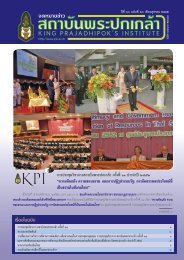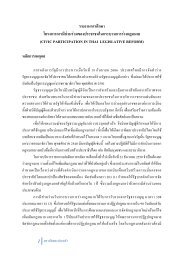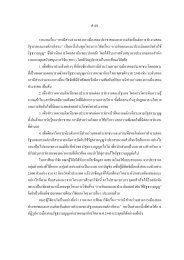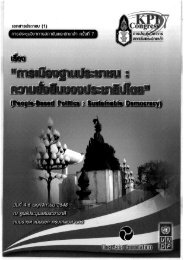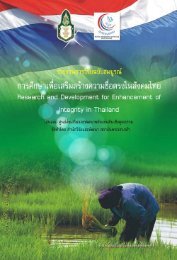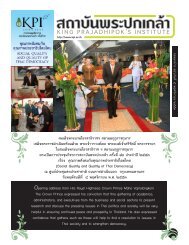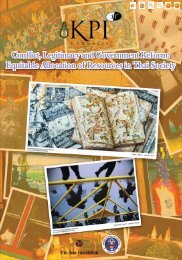SUFFiciENcy EcONOMy ANd GRASSROOtS DEvElOPMENt
SUFFiciENcy EcONOMy ANd GRASSROOtS DEvElOPMENt
SUFFiciENcy EcONOMy ANd GRASSROOtS DEvElOPMENt
You also want an ePaper? Increase the reach of your titles
YUMPU automatically turns print PDFs into web optimized ePapers that Google loves.
202<br />
The Meaning of Sufficiency Economy <br />
International Conference<br />
As mentioned in the Inpaeng’s mission, food security, achieved by the forestlike<br />
plantation, is one of the most critical issues of the network. This study found<br />
several indicators required to build up the food security of a household. First of all,<br />
the procession of land is very important. On average, each Thai small scale farmer<br />
has 3 Rai (4,800 square metres) for the plantation (ไทยโพสต์ 2551). A lesson learned<br />
from the past indicated that it is not the amount, but the usage of the land that<br />
contributed to the “Survival”. Before adopting the Inpaeng concepts, many families<br />
expanded their land for cash crop plantations by mean of deforestation. They found<br />
that the more land one processed the more expenses were needed for every process<br />
of cash crop plantations from the beginning to the harvest. This did not always mean<br />
more profit. Besides, the adverse effects of deforestation cannot be underestimated.<br />
They witnessed extreme climate changes which had started from previous decades,<br />
less or delayed rain, more pests and drier soil. Theoretically, Inpaeng’s members<br />
allocated their land into cash crop areas, fishery pond areas, chicken coop or pig pen<br />
areas and forest-like plantation areas. Having various kinds of food to consume is<br />
the second indicator of food security. Local food is regarded as better food than the<br />
“idiot food” (Thai: อาหารปัญญาอ่อน) (market, industrialized, preservative added foods).<br />
According to the concept of traditional health, the best food that fit one’s physical<br />
needs can be gathered around the area where one was born (Thai: เกิดที่ไหน กินที่นั่น). <br />
In his back to the roots journey, Seri Pongphit found that local river fish, <br />
local vegetables and Namwha bananas are “his” food (Thai: กินปลาเป็นหลัก กินผักเป็นยา<br />
กล้วยน้ำว้าบำรุงกำลัง). <br />
Local foods around the Phuphan mountain range are innumerable; they range<br />
from local vegetables, several kinds of bamboo shoots and mushrooms to animals<br />
such as feral pigs and several species of insects. These local species plantations,<br />
some vegetables, mushrooms, insects can be harvested only at a specific time of the<br />
year. Local species plants requires less care compared to cash crops. The plants grow<br />
and survive with little or no chemical intervention (such as pesticides and<br />
herbicides). Therefore, consumers are less exposed to chemical agents. This idea of<br />
consuming organic products, or “clean food” in their words, very much concerns the<br />
rural people. Many Inpaeng members regard the availability of clean food as the<br />
main factor contributing to longevity. <br />
“In the generations of our great grandfather, people died because of old<br />
age. We hardly heard that great grannies suffered from diseases like diabetes<br />
or cancer. But look at our generation, people are suffering from diabetes and<br />
many of them died from cancer, I think that was because we have been<br />
exposed to chemical fertiliser, pesticide and herbicide too much. There was<br />
no chemical usage in previous generations. We are not only exposed to those<br />
chemicals as users, but we also eat them via market food and even food from<br />
our farms.”<br />
Or



